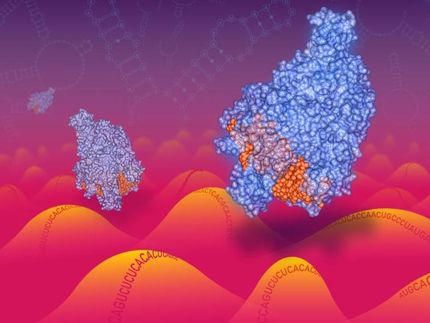BGI researchers uncover extensive RNA editing in a human transcriptome
BGI researchers uncover extensive RNA editing in a human transcriptome
Advertisement
In a new study published in Nature Biotechnology, researchers from BGI reported the evidence of extensive RNA editing in a human cell line by analysis of RNA-seq data, demonstrating the need for new robust methods to identify important post-transcriptional editing events.
RNA editing is a normal but not yet fully understood process in which small nucleotide changes occur after DNA has been transcribed into RNA. It is an integral step in generating diversity and plasticity of cellular RNA signature as a post-transciptional event that recodes hereditary information. RNA editing is an important area in the post-genomic era for its role in determining protein structure and function. It has become increasingly important in genetic research.
Last year, a study published in Science (Li, et al. Science, May 19, 2011) reported a large number of sequence differences between mRNA and DNA in the human transcriptome. This finding was startling because it implied that there might be a still undiscovered mechanism of 'RNA editing' that could disrupt the central dogma and affect our understanding of genetic variation. However, this view was strongly contested by other scientists because of the technical issue and lack of academic rigour, such as sequencing error or mis-mapping. In this latest study, BGI researchers developed a more rigorous pipeline for approaching these problems and answered some of the concerned questions, which contributed to paving way for the further studies of this field.
They obtained the whole-transcriptome data by RNA-seq from a lymphoblastoid cell line of a male Han Chinese individual (YH), whose genome sequence was previously reported as the first diploid genome of Han Chinese. RNA-seq, also known as "Whole Transcriptome Shotgun Sequencing", is a recently developed approach on transcriptome profiling that uses deep-sequencing technologies with the advantages of high-throughput data, low background, high sensitivity and repeatability. In a paper published in 2009 in Nature Reviews Genetics, RNA-seq is referred to as a revolutionary tool in transcriptomics.
"We used RNA-seq in the study to identify post-transcriptional editing events, and developed a computational and comprehensive pipeline to find the human RNA editing sites," said Zhiyu Peng, the leading author of the paper and Vice Director of Research & Cooperation Division of BGI. The pipeline was used to identify the extensive RNA editing from genome and whole transcriptome data by screening RNA-DNA differences of the same individual through successive quality control filters.
Through this pipeline, BGI researchers identified 22,688 RNA editing events, and found most editing events (~93%) convert adenosine (A) into inosine (I), which in turn is read as guanosine (G), in consistence with known editing mechanisms based on adenosine deaminase acting on RNA (ADAR). They also found 44 editing events in microRNAs (miRNA), suggesting there is a potential connection between RNA editing and miRNA-mediated regulation. Researchers also found in the study evidence of other types of nucleotide changes, but these were validated at lower rates.
"These findings demonstrate this multifilter molecular pipeline is an excellent approach in this study," said Peng. "With the multiple filters, false positive results can be controlled or eliminated while identifying RNA editing events, providing a more accurate and effective method to extensively analyze RNA editing. We now plan to apply this new methodology to larger-scale deep sequencing studies for more comprehensive analysis and profiling of editome, including studies with additional physiologically relevant samples."
"The evidence of extensive RNA editing identified in a human transcriptome underscores the necessity of an effective method to fully detect these events in order to further advance our understanding of human development and normal pathophysiological condition," said Jun Wang, Executive Director of BGI. "With continual improvement of the new approach, we believe this could be achieved in the near future."

























































